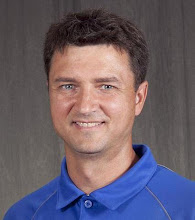This was the worst my serve ever was, but I've had serving issues starting in high school. In high school, I would pat my second serve in because I didn't know how to hit a topspin serve. When I first started playing league tennis in my early 20's I was developing a topspin second serve, but I would still have patches where I would double fault at a rate of around 50% - as in half of my service points ended as double faults. It got better with more practice and experience. I eventually got to the point where I would throw my serve into the air and swing hard and expect it to land in. My #1 rule was to always swing hard on every second serve - no matter how much pressure I was under. Rule #2 is to translate all of that effort into as much topspin as possible. After a while of following these rules, I found that more often than not, it would land in.
However, I've had other patches where my serve really left me. Again, it was when I hadn't been playing a whole lot of pressure matches and then suddenly was put under more pressure than normal - like playing a tournament for the first time in 3 years and having been out of league tennis for 2 years. So, I would say one of my first rules for avoiding double fault problems is to hit serves under pressure. If I haven't served under pressure in a long time and suddenly I'm in a pressure situation, I should expect problems. In other words, there is no substitute for match pressure to "toughen" your serve and make it less prone to breaking down . You've got to find a way to hit your serve under pressure and the only way to get better at that is to practice it under pressure.
So, you can play a lot of matches and hit a lot of faults as you gain confidence in your serve. Make sure you are playing a match at least 2-3 times per week. That's the magic number. If you play that much, your consistency will be there in all aspects of your game. Eventually, your mental toughness on your serve will improve. You will develop your own tactics for dealing with pressure. Once you get your serve to where you trust it, if you are playing with that frequency, it will continue to be trustworthy.
But, what can you do to simulate pressure in practice? Here are a couple of ideas
- Play a set against an imaginary opponent where if you get either your first or second serve in, you win the point, but if you double fault, you lose the game. So, you have to get a serve in play on four consecutive points to win the game. You serve every game. Can you beat this imaginary opponent? Also do this drill simulating having a doubles partner at the net. Serving in singles is definitely different than doubles, so practice both situations.
- Play a match against a real opponent where you only get one serve - i.e. if you miss your first serve, you lose the point. Again, play singles and doubles matches in this way.
When you've lost confidence that you can hit your serve in, the first thing you should do is start hitting serves into the service box. Stand at the baseline and hit very relaxed serves into the service box. Simplify your service motion - keep your general motion but do everything at about 50% - legs, backswing, toss, speed, etc. The idea is to just allow yourself to hit the ball in the box. Each time you hit a serve in very loudly say the count. When you get to 50, switch to the other side and repeat up to 50. There is no penalty for missing and you can serve at a brisk pace. You're just trying to train your muscles to hit the ball into the box again.
Next, do the same 100-ball drill but focus on two things:
- A good toss in your comfort zone
- Watching the ball like a cat
Next, do the same 100-ball drill, but focus on putting topspin on your serve. Keep your motion relaxed and simple. Hit the ball up. Adjust your toss a little more over your head. Focus on brushing up on the ball. But above all else, keep your speed at 50% and everything relaxed. Keep watching the ball like a cat; try to see the ball spinning as it flies up off your racquet and then down into the service box. Can you hit the ball into the box with 100% confidence?
Lastly, add a little more pace to your serves in the 100-ball drill. Keep in mind that you should still be relaxed and that you should only be speeding up the process at the END of your swing. The END of your swing is the only time you should feel that you are moving faster than your previous iteration of the drill. Focus on putting the toss where you want it, putting lots of tospin on the ball, and watching the ball all the way to the box. If you are not happy with how the consistency is, dial things back again. Don't move on until you feel that you are hitting most of your serves in.

